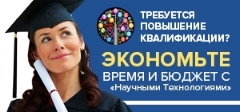Manoilov Alexander Egorovich (Candidate of Medical Sciences, Associate Professor of the Department of Life Safety, Disaster Medicine, Emergency and Emergency Medical Care of the Federal State Budgetary Educational Institution of Higher Education "South Ural State Medical University" of the Ministry of Health of the Russian Federation, Chelyabinsk)
Gabaidze Dzhemal Iosifovich (surgeon, Federal State Autonomous Educational Institution of Higher Education I. M. Sechenov First Moscow state medical university of the Ministry of Health of the Russian Federation (Sechenov University), University clinic №1 of the Sechenov University, Moscow)
Fishchenkov Vitaly Ivanovich (Deputy Chief Physician for Medical Part, Chelyabinsk Emergency Medical Aid Station; Chelyabinsk)
Gabaidze Georgy Dzhemalovich (resident, Federal State Budgetary Institution “National medical research centre of endocrinology” of the Ministry of Health of the Russian Federation, Moscow)
| |
Introduction. The prevalence of thyroid diseases among emergency medical services (EMS) patients in the Russian Federation (RF) has been insufficiently investigated. The study of epidemiology of thyreopathies in the cohort of persons served by ambulance service in the Russian Federation seems to be relevant. The aim of the work is to estimate the specific weight of served calls with final diagnoses of hypothyroidism and hyperthyroidism, as well as to make a forecast regarding the volume of probable calls to patients with thyreopathies. Methods of work. Evaluation of the call database of the state autonomous health care institution "Emergency Medical Aid Station" (SMAS) of Chelyabinsk for 2013-2022. Thyroid diseases were searched based on the International Classification of Diseases (ICD 10) codes E 03.9 and E 05.9. Results. During the ten-year follow-up period, the total number of calls did not change significantly (p) and averaged 371,705.4±6922.2. The mean proportion of thyrotoxicosis calls serviced per year was 16.8±2.1 (0.007%), and the mean proportion for hypothyroidism was 14.3±2.1 (0.004%). There was a significant (p) decrease in the proportion of thyrotoxicosis calls from 0.007% (or 24 calls) in 2013 to 0.004% (12 calls) in 2022, a rate of decline of 42.9% , and a significant (p) decrease in the proportion of hypothyroidism calls served from 0.005% (or 16 calls) in 2013 to 0.002% (7 calls) in 2022, a rate of decline of 60%. Conclusions. If the decade-long downward trend in the number of thyreopathic calls continues, the proportion of hypothyroidism patients in the total number of EMS calls may predictably decrease to 0.001%, and the number of predicted thyrotoxicosis calls may predictably decrease to 0.004%.
Keywords:ambulance call, thyrotoxicosis, hypothyroidism
|
|
| |
|
Read the full article …
|
Citation link:
Manoilov A. E., Gabaidze D. I., Fishchenkov V. I., Gabaidze G. D. ANALYSIS OF THE DYNAMICS OF AMBULANCE CALLS FOR THYROID DISEASES // Современная наука: актуальные проблемы теории и практики. Серия: Естественные и Технические Науки. -2024. -№01. -С. 198-202 DOI 10.37882/2223-2966.2024.01.26 |
|
|






